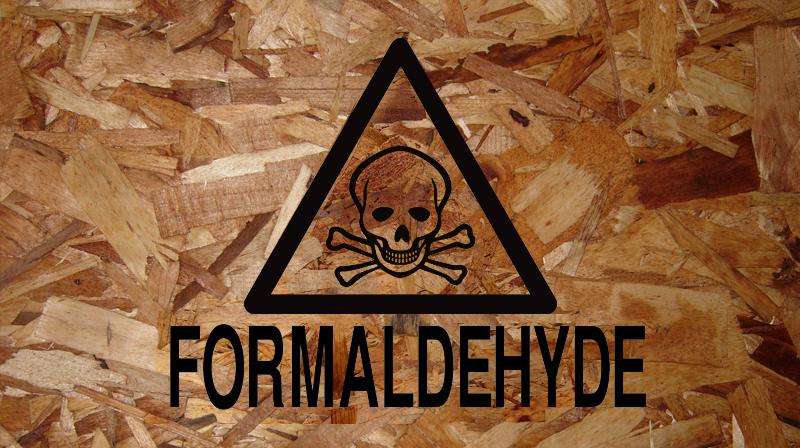
Most people think of formaldehyde as what mortuaries use for embalming; however, this colorless, flammable, strong-smelling chemical is used in building multiple materials and to produce many household products. Pressed-wood products such as flooring, particleboard, plywood, and fiberboard often contain traces of this dangerous chemical as well as in various glues, adhesives, and certain insulation materials. Materials containing formaldehyde can release it as gas or vapor into the air for up to 20 years after installation. During the 1970’s, urea-formaldehyde foam insulation was popular for use inside walls of homes due to its energy-efficient properties.
When formaldehyde is present in the air at levels exceeding 0.1 ppm, some individuals experience adverse effects. Some of the effects can be watery eyes, burning sensations in the eyes, nose, and throat, coughing, wheezing, nausea and skin irritation. Although these short terms effects are well known, less is known about its potential long-term health effects. In 1987, the EPA classified it as a probable human carcinogen under conditions of unusually high or prolonged exposure, and since then, some studies have suggested it is associated with certain types of cancer and in 2011 it was added to the National Toxicology Program’s “Report on Carcinogens”.
Recent events like the claims against the large flooring company, Lumber Liquidators, knowingly sold flooring with high formaldehyde levels has brought this issue to light. It ended up being highly unlikely that the flooring they sold caused any serious adverse health effects, but it does raise the question about this chemical going forward, and how will it affect commercial real estate due diligence, transactions, and liability.
California has implemented the toughest and most comprehensive production standard in the world for formaldehyde emissions; applying to all products offered for sale or use in California, no matter where they’re made around the world. Some say it’s only a matter of time until other states or even the federal government follow suit.
To limit formaldehyde exposure, the EPA recommends the use of “exterior-grade” pressed-wood to limit exposure in residential areas. Before purchasing pressed-wood products, including building materials, cabinetry, and furniture, buyers should ask about the formaldehyde content in these products. Formaldehyde levels can also be reduced by ensuring adequate ventilation, moderate temperatures, and reduced humidity levels through the use of air conditioners and dehumidifiers.




